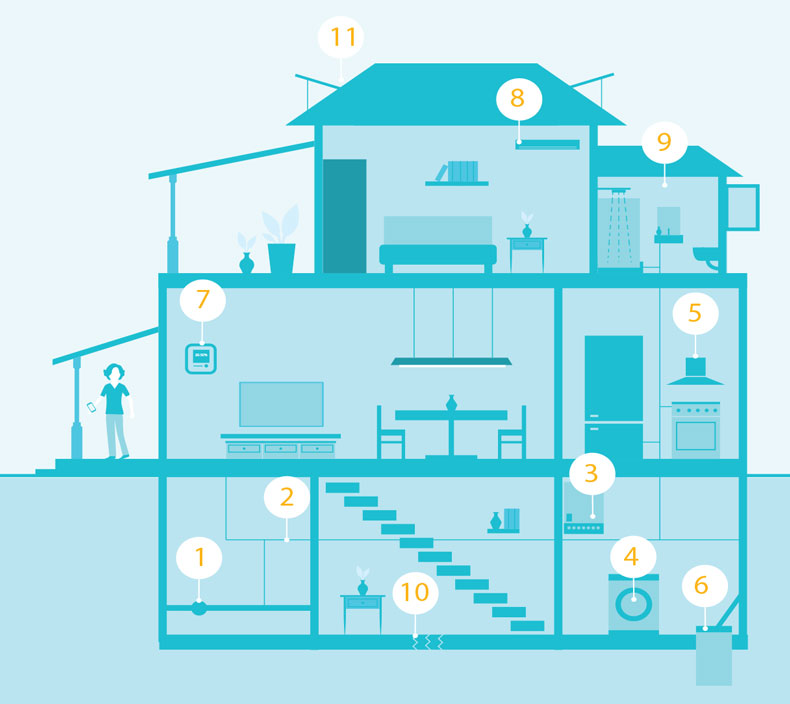
Whether caused by prolonged rain, heavy snowfall, old appliance hoses, frozen or corroded pipes, or even clogged drains, water damage is not only inconvenient, but also costly. Routine inspection and maintenance can help you keep water where it belongs. Use the following tips to identify potential problem areas in and around your house. While you can’t control Mother Nature, preventive household measures can minimize the possibility of water damage and costly repairs.
-
Water shutoff valves
Know where shuto valves for the main water supply, certain appliances, sinks and toilets are located in your home. In the event of a leak, this will enable you to quickly shut o the appropriate valves before calling a plumber. Consider shutting off your water supply if you will be away from home for a week or more.
-
Plumbing Pipes
Inspect your plumbing water lines and waste lines for leaks, damage or corrosion. If you notice problems, hire a licensed plumber for further inspection and repairs.
-
Water Heater
The average lifespan of a water heater is 7 to 10 years. If you notice puddles around your water heater, the water heater should be replaced. Hire a licensed plumber to inspect and ush your water heater annually.
-
Appliance Water Hoses
Washing machines, dishwashers, icemakers, air conditioners and garbage disposals all use water to operate. Inspect these appliances for leaks, and periodically replace the supply hoses. Shut o the water supply to the washing machine before leaving your home for an extended period.
-
Moisture-producing Appliances
Vent your clothes dryer, stove and kerosene heater outside where possible. Use exhaust fans or open windows when cooking or running the dishwasher.
-
Sump Pumps
If your basement is prone to leaks or ooding, a sump pump is the best defense. It’s important to keep it well maintained and tested regularly. Most sump pumps last about 10 years. Follow the manufacturer’s suggestions for testing and optimal operation. The areas around the pump should be clear of debris. A battery backup is recommended to ensure proper operation during power outages.
-
Humistat
Keep indoor moisture low (ideally between 30% and 50% relative humidity). Consider purchasing an inexpensive humidity meter, available at the hardware store.
-
Air Conditioners
Keep drip pans clean and the drain lines unobstructed and flowing properly.
-
Bathrooms
Check caulking around tubs and shower stalls to ensure that a watertight seal is maintained. To reduce moisture, use an exhaust fan or open a window while showering.
-
Basement
Periodically inspect your foundation walls and oors for cracks that might allow water seepage, especially if you live in an older home or an area with poor soil drainage. Avoid storing valuables in your basement. For household supplies and other i nexpensive items, use storage racks or shelves to elevate items several inches above the oor.
-
Attics
Ensure there is adequate ventilation in all attics and overhang areas to prevent leaks.
Source: Chubb Insurance
